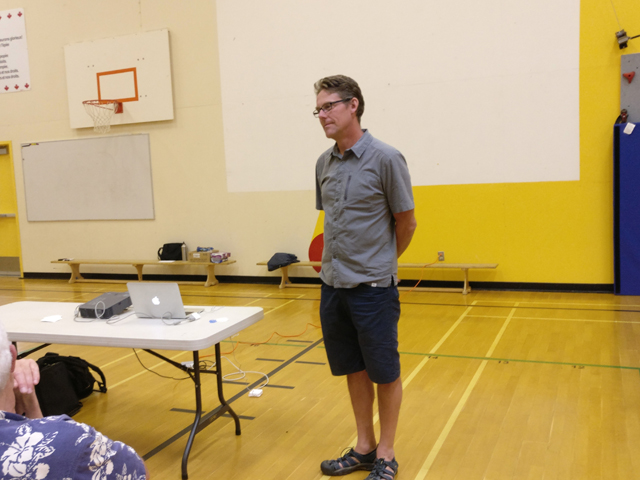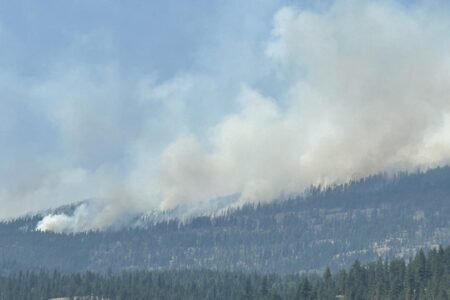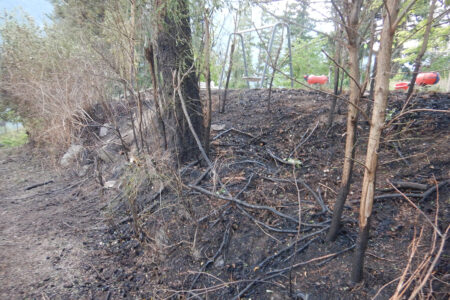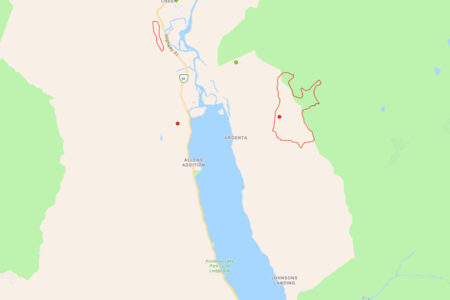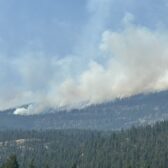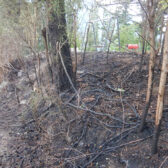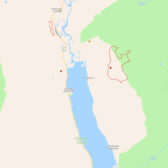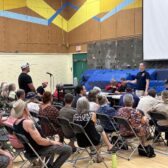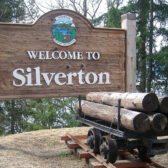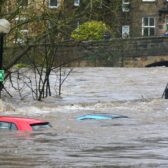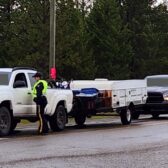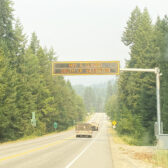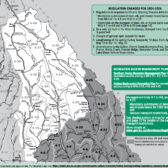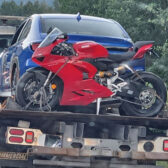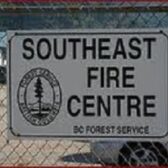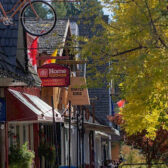CWPP — Landowners should work towards preventative measures
City of Nelson, BC Parks as well as Areas E and F of the Regional District of Central Kootenay unveiled its draft Community Wildfire Management Plan for West Arm Provincial Park during a pair of open house events in Nelson and at Redfish Elementary School on the North Shore near Longbeach.
The objectives of the CWPP are to identify forest stands with high-risk fuel loads adjacent to communities and critical infrastructure such as hospitals, radio communication towers etc.
These areas will be further assessed for potential fuel modification projects.
“Nelson, RDCK Areas E and F, are updating their community wildfire protection plan and the West Arm Park is updating their fire management plan, and they’ve all been combined to look at a landscape level approach because fire knows no boundaries,” said Nora Hannon, RDCK Emergency Program Coordinator.
The plan also seeks to review policy and planning of local governments to ensure adequate resources and response strategies for wildfire emergencies.
“There’s really three main objectives, said John Cathro, a Registered Professional Forester who does work on behalf of the RDCK and BC Parks.
“One is to let people know what we’re doing. The other is to invite feedback and [the third] is to hopefully inspire people to get involved and start taking action, especially on their private land.”
Cathro said that there are easy things to do to greatly reduce the risk and that these steps will be infectious and hopefully carry on through the community.
“If you do it, then your neighbours wonder why you’re doing it so they ask and figure it out. The old guy who can’t do it himself asks the young guy from next door to give him a hand and on it goes,” Cathro said.
According to Cathro Queen’s Bay is a leader in these kinds of plans and is a recognized Fire Smart Community, which is a recognition more communities should get involved in.
He said fire-plagued communities in places like Colorado and California take this approach and he says more communities up here should follow suit.
“You work as a community, have weekends a couple times a month to collectively address the problem. Here we either wait for someone else to do it or we think it doesn’t happen here,” Cathro said.
“The Sitkum fire last year changed people’s minds, and Fort Mac really got people sitting up and taking notice, but then we had a wet summer so people are thinking about other things, and that’s the challenge here.”
Cathro’s presentation centred around the idea that people on private land should be working towards preventative measures around their own property, and that this approach, if taken by many people, would greatly reduce the risk of fire damage to houses and communities.
“You need to understand where the high-risk fuels are, you need to understand fire behaviour and the winds. There are activities you can do to reduce that risk, and that doesn’t mean clear-cutting. It means removing the high flammable fuels, which in most cases is small diameter stuff, the stuff that dries out.”
The presentation showed that the last 70 years of fire prevention has created an “unnatural forest” and now people are realizing the need to remove the brush and small trees that natural forest fires would have done prior to human intervention.
During the question and answer period that followed the presentation, concerns were raised about the cost of removing this debris left over after the process and what can be done with it, specifically on private land.
Suggestions included converting the biomass into diesel fuel, a technique used in countries like Austria, or even something as simple as chipping the wood to be used as nutrient restoration and soil.
One of the more innovative suggestions floated at the end of the presentation was the idea of working with local mountain bike clubs and trail builders to work with the communities and design trails that can double as access points during a fire.
A big problem faced when it comes to fighting a wildfire is simply getting to the area that requires attention. If the bike trails were designed in a way that firefighters and other emergency personnel could use them as efficient routes to get to points of trouble it would certainly help address the issues in a faster way, rather than having to slog through thick bush and forest.
Cathro said that while the turnout for the open house on Wednesday in Nelson featured a lot of “blue uniforms” in the audience, he was disappointed there weren’t more regular citizens, to whom he was addressing in his presentation.
Cathro stressed the importance of action and communication between members of the community and private land holders, which when combined with efforts already in place from local governments to protect important infrastructure will reduce the risk across the board rather than in specific areas.



